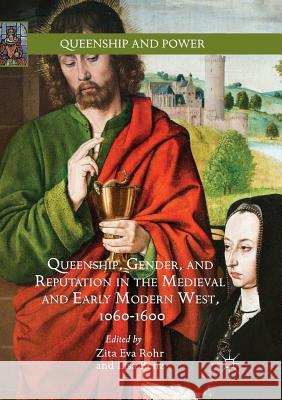Queenship, Gender, and Reputation in the Medieval and Early Modern West, 1060-1600 » książka
topmenu
Queenship, Gender, and Reputation in the Medieval and Early Modern West, 1060-1600
ISBN-13: 9783319810065 / Angielski / Miękka / 2018 / 214 str.
Kategorie BISAC:
Wydawca:
Palgrave MacMillan
Seria wydawnicza:
Język:
Angielski
ISBN-13:
9783319810065
Rok wydania:
2018
Wydanie:
Softcover Repri
Ilość stron:
214
Waga:
0.31 kg
Wymiary:
21.01 x 14.81 x 1.4
Oprawa:
Miękka
Wolumenów:
01
Dodatkowe informacje:
Wydanie ilustrowane











